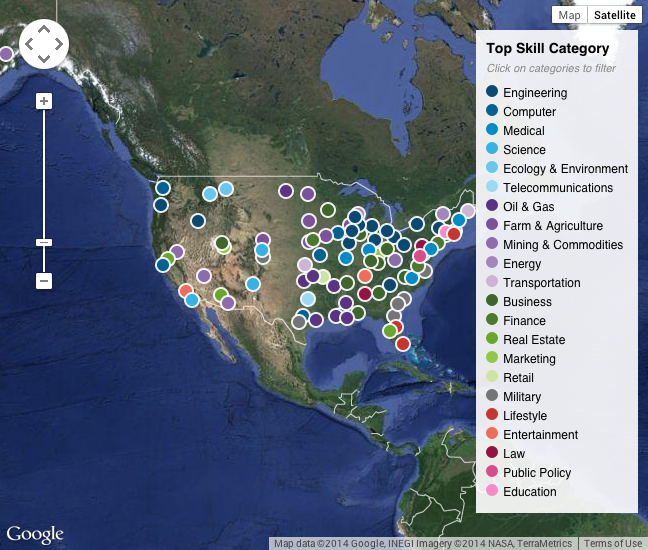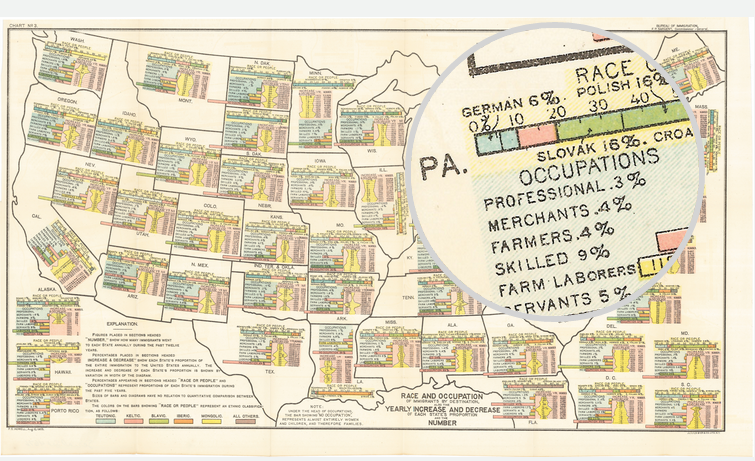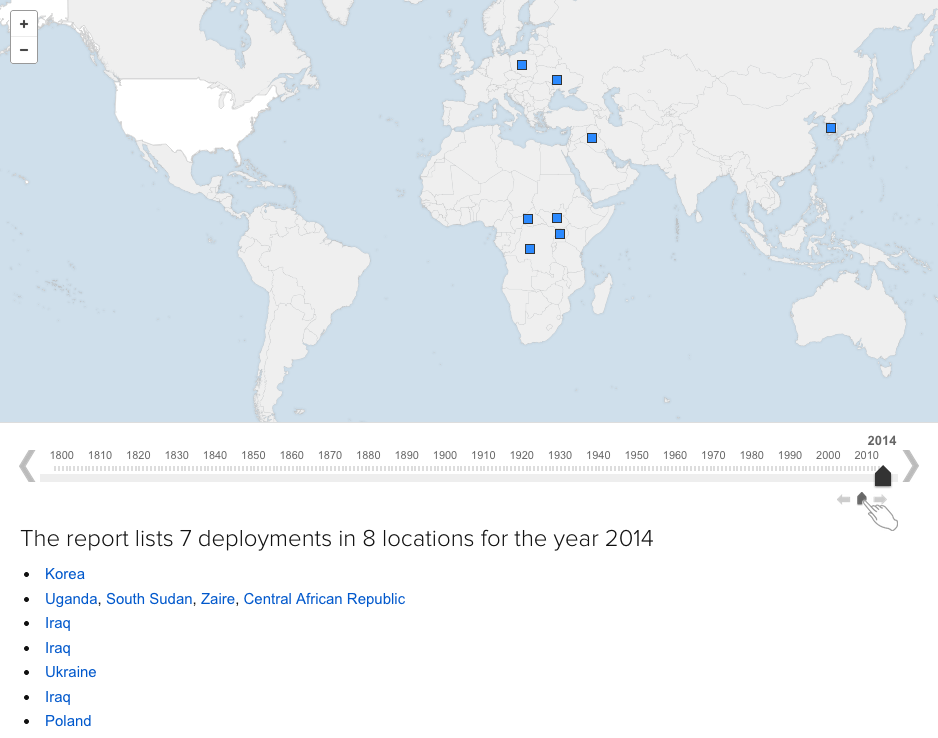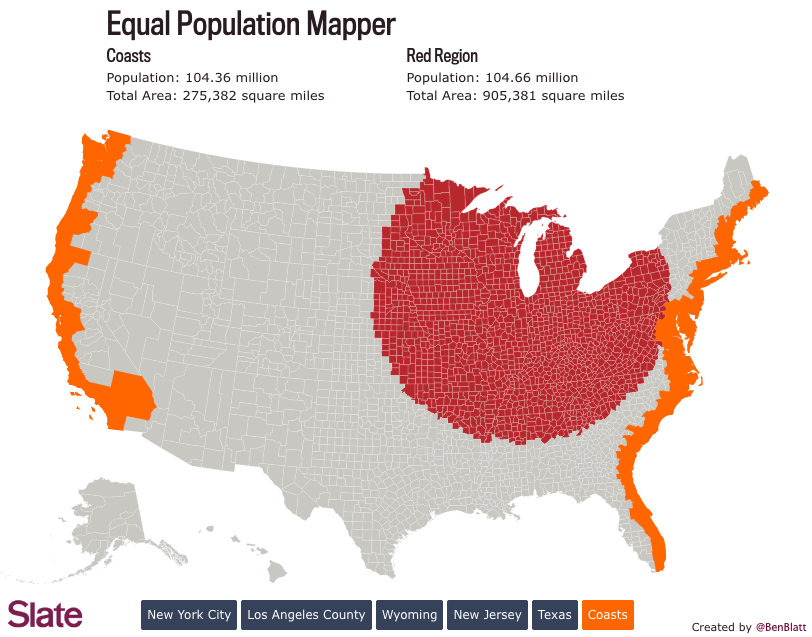A little while ago, LinkedIn put together a map looking at the disproportionately represented jobs and skills in cities in both the United States and Europe. That is different from the most common jobs but those that are “most uniquely found” in cities.

Unfortunately the interface is a bit clumsy. For something that is about exploring different cities, I think the small area of the map could be bigger. And the highlighting functionality lags. But the overall idea is interesting.
And on a side note, while graphic design is not specifically covered, I found the list of skills for Chicago surprising. If only because I work as a designer for a company in the market research industry.

Credit for the piece goes to Sohan Murthy.









